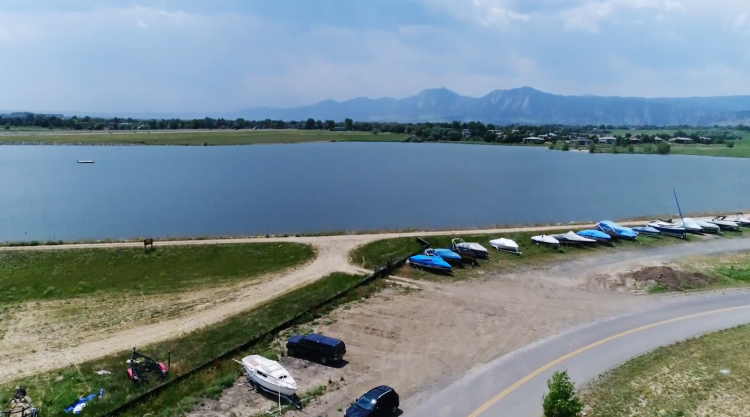Tracking airborne pollutants, ozone precursors in Boulder

Preliminary results from an automated emissions monitoring system at the Boulder Reservoir indicate a strong correlation between air quality in the area and oil and natural gas development in neighboring Weld County, with northeasterly winds consistently bringing higher levels of ethane, propane and methane that are not attributable to urban emissions or vehicles.
The findings, compiled from thousands of data points taken since April of last year, identify sources of airborne pollutants known as volatile organic compounds (VOCs), ozone precursors that can adversely affect Boulder County’s air quality.
In the presence of sunlight, ozone is created through the chemical reaction of VOCs and nitrogen oxides (NOx), causing particularly high levels of ozone pollution during summer months. Ozone levels in the Denver Metro/North Front Range area are above the National Ambient Air Quality Standards (NAAQS) for ground-level ozone as set by the U.S. Environmental Protection Agency (EPA) under the Clean Air Act.
The project, which is sponsored by Boulder County Public Health and led by researchers from CU Boulder’s Institute of Arctic and Alpine Research (INSTAAR) in partnership with the Colorado Department of Public Health and the Environment (CDPHE), installed the first automated system of its kind in the Rocky Mountain region that provides valuable real-time information through hourly postings on a public website for residents and policymakers alike.
The researchers have measured methane and NOX on a continuous 24/7 basis using equipment at Boulder Reservoir since mid-February 2017, collecting over 100,000 NOX measurements and almost 35,000 methane measurements in that span. The site has also collected VOCs such as ethane, propane and benzene since early April 2017 in over 4,000 samples. The CDPHE monitors ozone at the Boulder Reservoir concurrently, which provides information for ozone and ozone-precursor VOC and NOX data from the same location.
Over the first year of the monitoring operation, wind direction proved to be the strongest predictor of hourly air quality in Boulder. Strong winds from the west tended to carry the fewest pollutants of any samples, while moderate to strong winds from the northeast tend to carry the highest pollutant levels.
“The results of this study show the significant negative influence oil and gas facilities from outside the county have on people here in Boulder County,” said Jeff Zayach, Boulder County Public Health Director. “This is a public health concern, especially since the levels of ozone in the county and the Front Range are already so high that it’s causing and contributing to respiratory problems.”
“The two most surprising findings are the very clear association between VOC pollution levels and wind direction and the attention that this project has received from residents,” said Detlev Helmig, an associate professor at INSTAAR and the lead investigator of the project.
“The data are very clear: oil and gas pollution blowing in from Weld County is undermining public health here in Boulder County,” said Elise Jones, Boulder County Commissioner. “If we are to be successful in our efforts to ensure healthy air for our residents and to meet the Clean Air Act’s ozone standards regionally, these emissions must be dramatically reduced or, better yet, eliminated.”
Breathing ground-level ozone causes symptoms such as coughing, throat irritation, pain, burning or discomfort in the chest, chest tightness and wheezing or shortness of breath. Long-term exposure to ozone causes more frequent and severe asthma attacks, increased hospitalizations and higher rates of illness and death.
This air monitoring project provides new public insight into which VOCs contribute to ozone formation and in what capacity, providing Front Range residents and lawmakers with crucial information needed to make decisions on policies to reduce ozone levels and meet the national standard.
The Boulder Reservoir ozone precursor air quality monitoring is currently funded until September 2018.
[video:https://www.youtube.com/watch?v=5lNUtJlOfv4]


